Japanese Local Cuisine: Bonds in Fishing Village Meals
May 09,2014
Japanese Local Cuisine: Bonds in Fishing Village Meals
May 09,2014
In this series, our editors Nobue and Miyoko speak with experts on such topics as food, customs, Japan, and traditional lifestyles.

Miyoko:What is your image of Japanese cuisine?
Nobue:Healthy and nutritious, I guess.
Miyoko:Other characteristics are the use of seasonal ingredients and the wealth of meals prepared for special occasions.
Nobue:For this article, we are going to speak with Kiyoshi Aya, a food culture researcher.
Miyoko:I’m looking forward to our conversation.

Kiyoshi:Today, I’d like to talk about three local delicacies.
The first one is okiagari, found at the Yui fishing harbor in Shizuoka’s Shimizu Ward. The Yui fishing harbor in Shimizu is noted for its catches of sakura shrimp. For several months in the spring and the fall, crew members board the ship owners’ ships and fish from evening to morning.
Miyoko:So they fish at night.
Kiyoshi:That’s right. During the day, sakura shrimp stay in deep waters and then rise at night. So the fishermen aim to catch them when they are closer to the surface. In the past, when a full night of fishing came to an end, ship owners would prepare a feast at their homes to thank their crew. Those feasts were called okiagari.
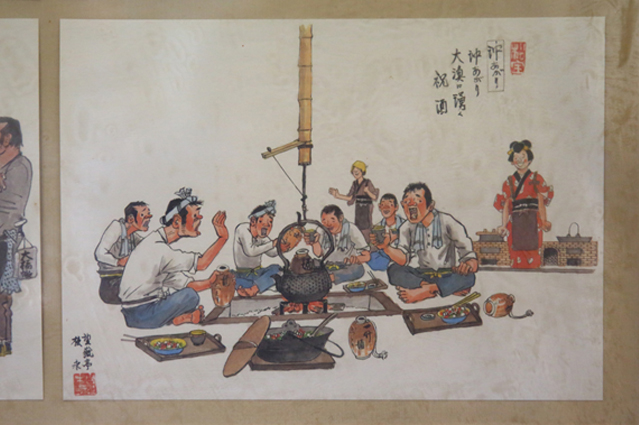
Miyoko:What do they serve at the okiagari?
Kiyoshi:It’s a stew-like dish where freshly caught sakura shrimp, leeks, and tofu are quickly simmered in a broth of sugar, soy sauce, and cooking saké and served directly from the pot. It’s easy to prepare quickly and the delicious salty-sweet taste is perfect for tired bodies. I expect it goes well with a drink of saké too. The dish itself is now called okiagari.
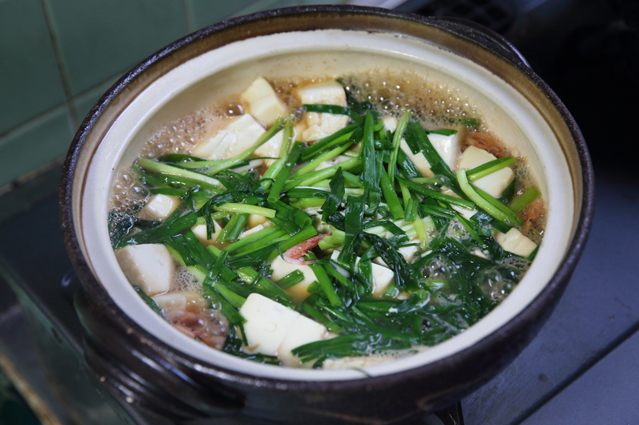
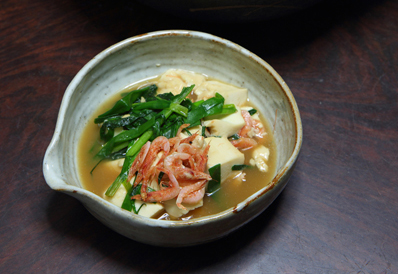
Nobue:Is the okiagari custom still going these days?
Kiyoshi:No. Most crew members drive to the harbor nowadays, so it’s hard to hold a post-fishing celebration where alcohol is consumed.
It’s unfortunate that the fishermen’s okiagari feasts have gone out of fashion, but the food is loved by many as a local taste.

Kiyoshi:Going out to sea to fish is a life-or-death endeavor, so developing mutual trust and connections among fishermen is vital. This is perhaps why they value the time spent deepening their bonds over food. The next two topics I have are local dishes that breathe life into fishing villages.
There’s a type of sushi called gennari sushi in Inatori, a hot springs town on the eastern side of the Izu Peninsula. Gennari sushi is made on special occasions in Inatori such as the launching of a new boat or a wedding ceremony, and the food is distributed to neighbors and fellow fishermen.
Miyoko:Gennari [to be worn out] is an interesting name.
Kiyoshi:It is, isn’t it. But it doesn’t have any negative meaning: it is used in the sense of being full or very satisfied after a meal. And this makes sense, as one piece of gennari sushi is 7 x 9 centimeters, a super big size. It is customary to serve five of these pieces as a set. Such a set is equivalent to about 10 lightly-filled bowls of rice.
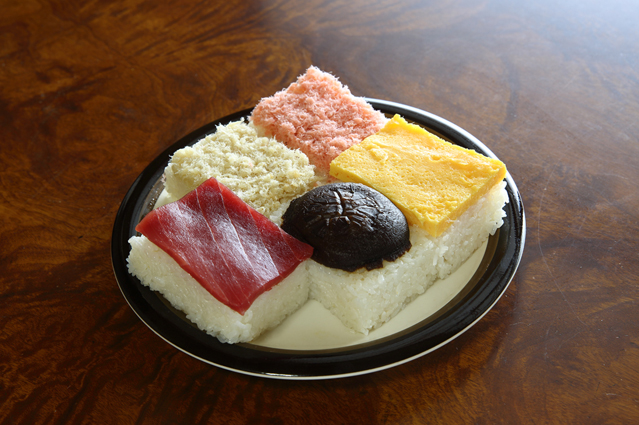
Nobue:And these sets of gennari sushi are distributed to everyone?
Kiyoshi:That’s right. For example, I heard that when the son of a fisherman in one family got married, they distributed gennari sushi to 130 households in the neighborhood.
The five standard sushi toppings are red and white flaked alfonsino, omelette, simmered shiitake mushrooms, and tuna sashimi. Gennari sushi is also distinctive for the use of sweet vinegar rice, although this varies depending on the household.
Nobue:130 households!
Kiyoshi:Obviously a single family cannot provide this much sushi to 130 households. Apparently, helpers came from 13 homes of neighbors and relatives, and everyone split up cooking the rice, preparing the toppings, and forming the sushi pieces to make all the gennari sushi.
Miyoko:Since it’s the family of a fisherman, they must be quite particular about the fish.
Kiyoshi:I heard that the fisherman caught all the alfonsino himself. Similar to the sakura shrimp in Shimizu, even though it’s local, it’s expensive to buy in the market. That’s why they use fish they catch themselves. Turning the fish into oboro flakes is both a luxury and hard, labor-intensive work. The custom is a financial burden too.
Nobue:Do people still carry on this custom?
Kiyoshi:Yes, they do. Women who marry into families in the area are taught the custom from their mothers-in-law or learn the tastes while helping out at neighborhood celebrations.
When I asked people “Isn’t it hard to make hundreds of pieces of sushi?”, they would answer that “maintaining the bonds among fishermen is incredibly important”. I was impressed by their sense of mission when they told me that they want to pass on what they can pass on, because they don’t want this custom to end with their generation.
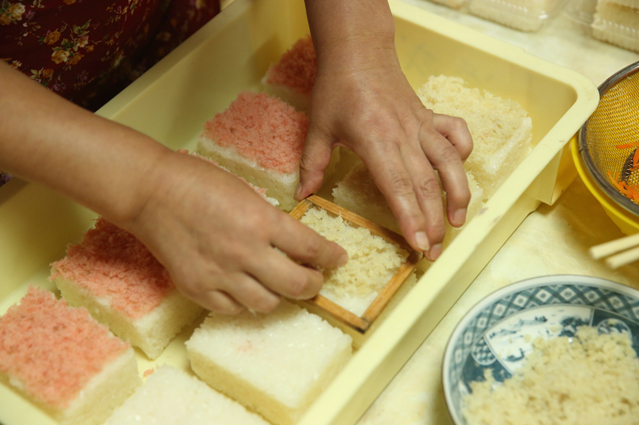
Kiyoshi:The last local dish I want to introduce to you is salted bonito from Tago, a fishing village on the western side of the Izu Peninsula.
Perhaps the best way to explain salted bonito is to think of it as the bonito version of salted salmon. It is a preserve made by salting and drying whole bonito. In Tago, when the end of the year approaches, ship owners give gifts of salted bonito to their crew in appreciation of their hard work. The gifts also apparently carry the implicit message of asking the crew to work on the ship the following year.
Miyoko:So they don’t give it to crew members who only work that year. It’s a very meaningful gift then.
Kiyoshi:Definitely. So in households that receive the gift, they first affix a straw decoration to the salted bonito and place it along the family altar. They leave the bonito there until the end of the year, and then over the first three days of the New Year, they slice the fish into three pieces and offer half of each piece to the ship’s deity and eat the remaining half. They have the fish as fillets or grill it and have it with tea over rice. Since the bonito is dried, it makes a delicious broth. This happens mid-winter when the sea is rough and there are few fishing days. So the families prize the salted bonito, having it bit by bit as a daily meal.
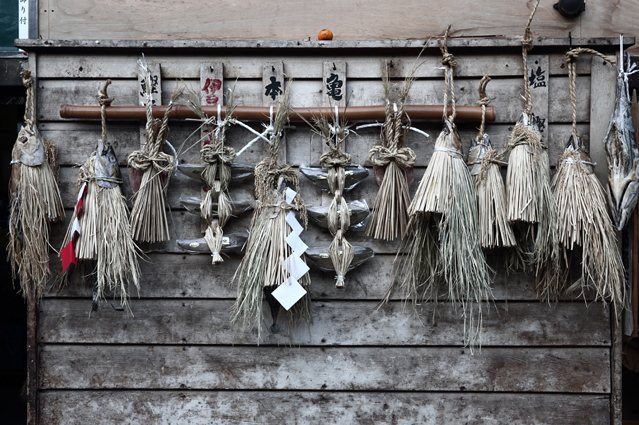
Miyoko:It sounds very delicious. But compared to salted salmon, I’ve not heard much about salted bonito. Does the custom remain only in that region?
Kiyoshi:It used to be made in various places across the country, but today it’s only made in the Tago area. If you ask someone from a neighboring village, they won’t have heard of salted bonito. It’s a very localized specialty. I think because it’s part of a gift-giving culture, salted bonito has been passed along to the present day without disappearing.
Compared to times past, more people own their own boats, and boat safety now in general is much improved. Nevertheless, they risk their lives going out to sea, so the spirit of watching out for each other’s safety and of maintaining bonds and cooperation is probably the same today as in the past. It’s a culture and custom that really reflects the essence of a fishing village.
Nobue:Is salted bonito just as familiar to young people in Tago today?
Kiyoshi:In recent years, there’s been a movement, mainly led by young people, to champion salted bonito as an affordable gourmet dish and to promote it to people outside the village. Residents, however, are divided over the issue. Some oppose the idea, saying that salted bonito is a sacred offering to the deities and shouldn’t be used to promote the town.
I was taken aback when I heard about this opposition, and I realized that food culture can be viewed in this context. Not all the residents want people to visit and eat salted bonito because it’s delicious. Instead, many want to respect the meaning behind the dish and feel it’s not necessary to popularize it. It’s not a case of who is right or wrong. There are many different views. I believe food is passed on from generation to generation while overcoming these types of issues.

Miyoko:It’s definitely sad when a local food culture fails to be passed on to the next generation. But at the same time, as our lifestyles change, it’s inevitable, in some respect, that fewer people will have the time to prepare labor-intensive meals or the will to pass on the culture.
Kiyoshi:You’re right. Food culture itself changes over time, and some feel that we should just leave these food cultures to their natural course. On the other hand, others feel that we should try to pass these foods and cultures down, even if they take on new forms. As part of this, people are taking another look at school lunches.
Nobue:School lunches?
Kiyoshi:Last year, washoku [Japanese cuisine] was designated as a UNESCO intangible cultural heritage. This led to a major push by the central government, regional governments, and industry stakeholders to ensure that the culture of washoku is preserved and passed down. And this created opportunities to reappraise school lunches.
Some young people today react to the idea of passing down washoku, asking why is it necessary. They mean it sincerely: “Why should I have to preserve washoku when I like bread and pasta?” I was quite surprised at this reaction. The idea of preserving their own country’s food culture itself isn’t convincing for them. Without clear reasons, they won’t buy into it.

Nobue:It’s tough to come up with answers when you’re asked to justify why we should preserve our food culture…
Kiyoshi:For example in France, where food education is quite advanced, young generations don’t question the idea of preserving French cuisine. They say: “It’s our food culture, so it’s natural to preserve it.” But in Japan, the young ask “Why?” Even as washoku and Japanese food culture is praised internationally, if the young generation’s hearts and minds are distanced from washoku, it will be an uphill battle to preserve it. Because no matter how much the media or the government or companies promote the wonder of washoku and local foods, it’s up to the people living in the regions to pass it on. It’s in this sense that there have been more calls for washoku cultural education for the young.
Miyoko:Education?
Kiyoshi:That’s right. For the young generation, they have no chances to gain an understanding of washoku. At home, they have many options even for the main dish besides rice, such as bread, pasta, udon noodles, and so on. Fewer households now have rice bowls for each person and make miso soup. More families sit at tables with large-plate meals set in the middle. These changes in how and what families eat are probably connected to the reactions we see in children.
Miyoko:I see. But mothers are busy these days. It may not be easy for them to prepare meals every day with a focus on food education.
Kiyoshi:That’s correct. Which is why attention is being paid again to school lunches. In fact, okiagari was selected to a local school lunch menu.
Children eat schools lunches with their classmates. And beyond eating, school lunches are well suited for learning the background and context of what washoku is. Children at schools naturally need to study a diversity of cultures, and some believe that not all meals should be washoku. This is an area that needs discussion.
Nevertheless, I believe the inclusion of washoku on the UNESCO intangible cultural heritage list has laid the groundwork for such discussions to arise and has provided children with opportunities to experience washoku and Japanese food culture, which is a very positive development.
As I have introduced today, food is intimately connected with various local cultures and serves to connect people together. There are still many unique local dishes not widely known across the country. Going forward, I hope that this rich washoku culture will be passed down in a natural fashion to younger generations while incorporating new changes.
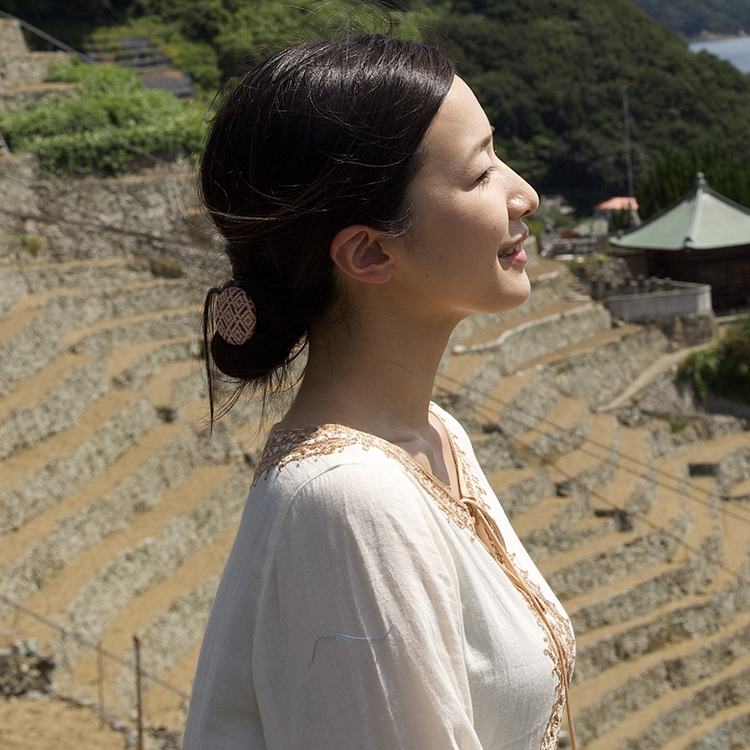
food culture researcher
food culture researcher
food culture researcher and Secretary of the Research Division at the National Council for Washoku Culture
Born in Osaka prefecture, Kiyoshi is involved in researching traditional regional Japanese cuisine and the dietary habits in fishing and farming communities as well as writing and giving lectures about local foods.
Recent publications include Washoku Techo [Washoku Handbook] (co-author, published by Shibunkaku), Furusato no Tabemono [Hometown Food] (Washoku Culture Booklet No. 8) (co-author, published by Shibunkaku), and Shoku no Chizu [Maps of Food], Third Edition (published by Teikoku-Shoin).